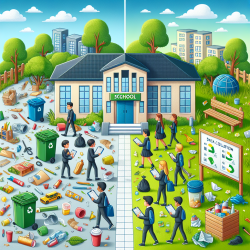Introduction
In the quest for creating sustainable environments, schools play a pivotal role. The research article, "Evaluating Food Packaging Waste in Schools: A Systematic Literature Review," sheds light on the critical issue of food packaging waste in school settings. This blog aims to translate the research findings into actionable insights for practitioners, emphasizing the importance of data-driven strategies in minimizing environmental impact.
The Current Landscape
Public schools in the U.S. generate approximately 14,500 tons of municipal solid waste daily, with 42% attributed to food packaging waste. This staggering statistic highlights the urgent need for effective waste management strategies. The research identifies a lack of standardized methodologies for evaluating food packaging waste, leading to varied practices and outcomes.
Key Findings and Recommendations
The systematic review examined 24 studies, revealing diverse methodologies, including waste audits, models, and qualitative observations. The lack of standardization in waste audits, such as inconsistent waste categories and data collection periods, underscores the need for a unified approach.
- Adopt Standardized Waste Audits: Implementing a standardized waste audit protocol can enhance data accuracy and comparability across different school settings. This involves categorizing waste consistently and capturing both weight and volume data.
- Focus on Key Waste Categories: Prioritize waste categories that significantly impact the environment, such as plastics and compostable materials. Understanding these categories can guide targeted interventions.
- Integrate Socioeconomic and Demographic Data: Collecting data on socioeconomic status and racial demographics can reveal disparities in waste generation and inform equitable waste reduction strategies.
Implementing Change: A Call to Action
Practitioners are encouraged to leverage the findings from this review to implement effective waste management practices in schools. By adopting standardized methodologies, schools can better understand their waste profiles and develop targeted interventions to reduce waste generation.
Moreover, engaging students, staff, and administrators in waste reduction initiatives fosters a culture of sustainability and empowers the school community to take ownership of environmental stewardship.
Conclusion
Transforming school environments through effective waste management is not only an environmental imperative but also an educational opportunity. By utilizing data-driven strategies and fostering a culture of sustainability, schools can significantly reduce their environmental footprint and inspire future generations to prioritize environmental health.
To read the original research paper, please follow this link: Evaluating Food Packaging Waste in Schools: A Systematic Literature Review.










